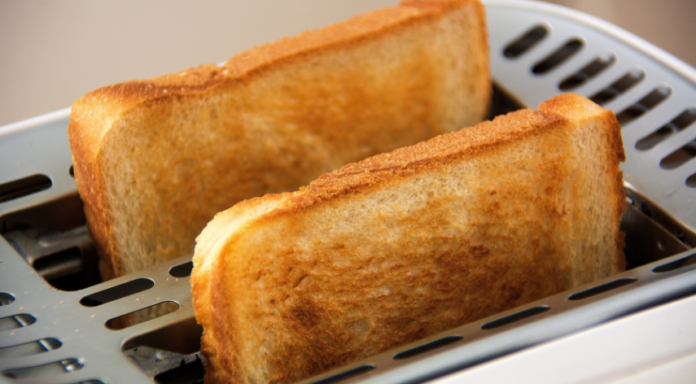When it comes to breakfast, there’s one star that shines brighter than the rest, subtly toasted to perfection, ready to host a plethora of flavors—the humble toast. It’s a beloved staple found on breakfast tables across the globe, but did you know that there is so much more to it than just a simple slice of bread in a toaster? Welcome to the world of ‘toastul,’ where we explore the art and science of crafting the perfect toast and elevating your breakfast game to a whole new level.
The Golden Rules of Toast
Before one can appreciate the art of toast, it’s essential to understand the golden rules that can turn an ordinary slice into a culinary delight.
Choosing the Right Bread
Bread is the canvas of toastul, and the quality of your canvas determines the outcome. Do you go for a chewy sourdough, a nutty whole grain, or a classic white? Each has its charm, texture, and flavor profile that would pair differently with various toppings.
Getting the Perfect Thickness
The thickness of the bread is critical. Too thin, and it can get too crispy, too thick, and you risk a mushy middle. The sweet spot is somewhere between ¾ inch—exactly where you want it to be to retain a good balance between the crispy edges and the soft center.
Gauging the Right Temp and Time
Temperature and time control the toasting process, affecting everything from taste to texture. High heat for a short time yields a more substantial crispness, while low heat for longer brings out more flavor. Play with these variables to discover your personal sweet toast spot.
The Science of Toasting
The Maillard Reaction—the browning of sugars and proteins that gives toast its distinct flavor and color—is science’s gift to our breakfast tables. Understanding this process empowers you to master the toasting game.
The Maillard Effect
The Maillard Reaction occurs when the surface of bread is exposed to temperatures around 310°F (154°C). This chemical phenomenon not only affects color and taste but also alters the texture, making the bread more palatable and easier to digest.
Moisture Management
Managing the moisture content of your bread is crucial. Too dry, and it won’t toast evenly; too moist, and it may become soggy. A fresh loaf may require a bit of drying out, while a stale one may need a spritz of water before toasting.
Thermal Conductivity
Different bread types have varying thermal conductivities, meaning they transfer heat differently. A hearty rye will require more time and heat than a light brioche. It’s about understanding your bread’s properties and how to apply the heat for optimal toasting.
The Art of Topping
This is where personal preferences and creative flair come into play. From traditional to avant-garde, the topping possibilities are endless.
The Classic Trio
Butter, jam, and peanut butter—these timeless classics complement the toast’s simplicity with their rich flavors. Whether you’re Team Sweet or Team Savory, one of these will always hit the spot.
Exploring the Savory Side
Avocado, smoked salmon, eggs Benedict—savory toppings can turn your toast into a more sophisticated dish, perfect for a brunch gathering or a leisurely weekend breakfast.
Sweet Innovations
Cinnamon toast, caramelized fruits, and chocolate spreads are just the start of the sweet toast revolution. Adding a touch of sweetness can brighten up even the dreariest of mornings.
Toaster vs. Oven vs. Grill
The eternal question—what’s the best way to toast your bread? Each method has its pros and cons, which we’ll explore here.
The Toaster
Quick, easy, and energy-efficient, the toaster is the go-to for most people. It delivers consistent toasts for everyday use but might not be the best for artisanal bread or large quantities.
The Oven
With more space and flexibility, the oven is the choice for toasting artistic loaves and feeding a crowd. However, it takes longer and requires preheating, which may not be ideal for rushed mornings.
The Grill
Grilling offers a smoky depth that’s hard to replicate with the other methods. It may take longer and more attention, but the taste can be worth the effort, especially for those who love a char.
Presenting Your Toast
They say you eat with your eyes first, and presentation is key. From plating to styling, presenting your toast adds the final touch to the toasting experience.
Plating Aesthetics
Consider the size and shape of the plate or board you use to serve—toasting is as much a visual pleasure as it is a culinary one. Circular plates for stacked toasts, long boards for communal eating, or simple butter dishes for a slice on the run.
Styling with Toppings
The arrangement of your toppings is your opportunity to express creativity. Whether with a riverside of maple syrup or a sprinkling of crushed pistachios, each style communicates a unique story.
Advanced Toasting Techniques
For the daring toast enthusiast, there is an array of advanced techniques to explore.
Infused Butters and Oils
Take your butter to the next level with infused flavors like garlic, cayenne, or truffle. Similarly, oils like olive and avocado can be flavored to add depth to your toastul.
Sous-Vide Toasting
Sous-vide—the method of cooking food in a vacuum-sealed bag in a water bath—is gaining traction in the toast world. By locking in moisture, it ensures an incredibly soft slice with a delightful crisp after a quick sear.
Charcoal-Grilled Toasts
For those seeking the ultimate in smoky flavor, grilling your bread over charcoal can be a game-changer. A quick brush of olive oil before grilling can enhance the taste further.
Conclusion
The art and science of toastul go deeper than mere breakfast—it’s a canvas for culinary creativity, an exploration of flavors and textures, and an expression of personal taste. In this guide to toastul delights, we’ve barely scratched the surface. Go forth, experiment, and toastulize your mornings, one golden slice at a time.


